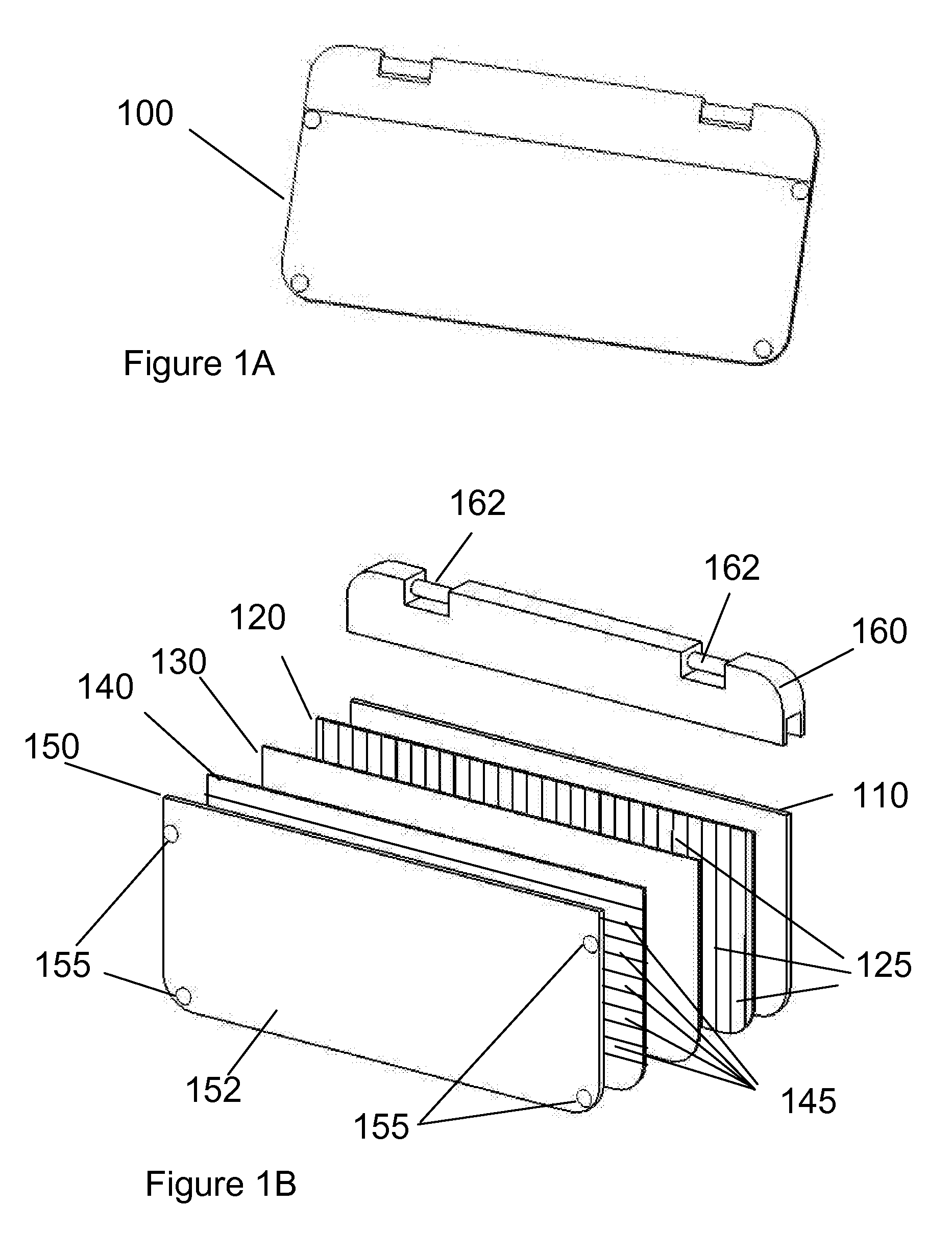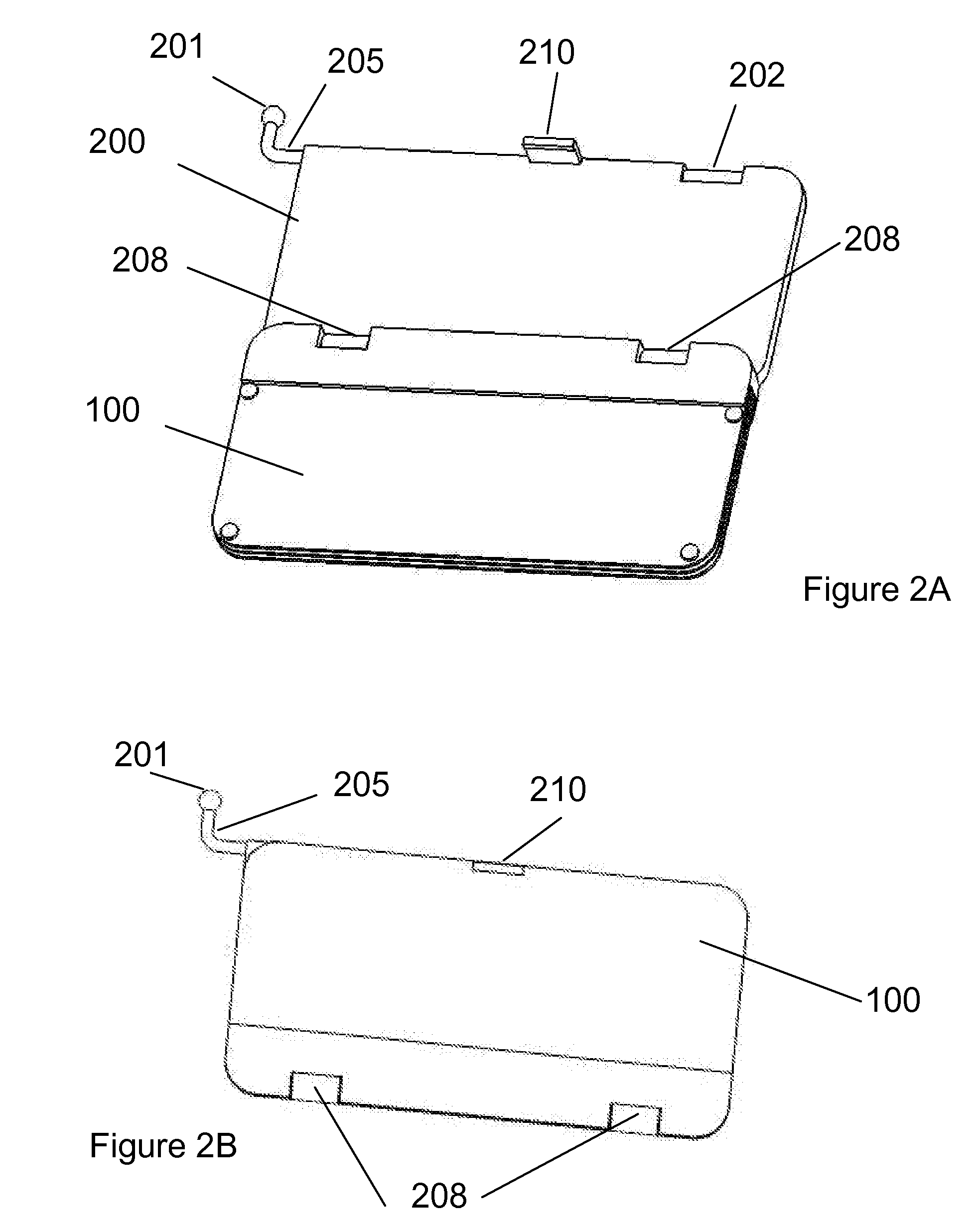Sunlight attenuation visor
a technology of attenuating light and visor, which is applied in the direction of lighting and heating equipment, instruments, transportation and packaging, etc., can solve the blinding effect of sunlight through the windshield and windows of vehicles, the ineffective tinted layer only on the top portion of the windshield, and the inability to reduce the glare through the rest of the windshield
- Summary
- Abstract
- Description
- Claims
- Application Information
AI Technical Summary
Benefits of technology
Problems solved by technology
Method used
Image
Examples
Embodiment Construction
[0006]According to one embodiment of the invention, an apparatus for adjusting the intensity of light transmitted through the apparatus is provided. The apparatus comprises a first polarizer having a polarizing orientation, and a second polarizer having a polarizing orientation perpendicular to the polarizing orientation of the first polarizer. Two electrodes, a first and second electrode, are disposed between the polarizers, and a nematic liquid crystal layer is disposed between the electrodes. At least one light detector is positioned for measuring the intensity of the transmitted light, and a voltage controller is in electrical communication with the light detector. The voltage controller controls the voltage level applied to the electrodes based on the intensity of the measured light, wherein the voltage determines the amount of light transmitted through the apparatus.
[0007]In another embodiment, the apparatus for attenuating sunlight has electrodes that are embedded on a transl...
PUM
| Property | Measurement | Unit |
|---|---|---|
| transmittance | aaaaa | aaaaa |
| transmittance | aaaaa | aaaaa |
| total transmittance | aaaaa | aaaaa |
Abstract
Description
Claims
Application Information
 Login to View More
Login to View More - R&D
- Intellectual Property
- Life Sciences
- Materials
- Tech Scout
- Unparalleled Data Quality
- Higher Quality Content
- 60% Fewer Hallucinations
Browse by: Latest US Patents, China's latest patents, Technical Efficacy Thesaurus, Application Domain, Technology Topic, Popular Technical Reports.
© 2025 PatSnap. All rights reserved.Legal|Privacy policy|Modern Slavery Act Transparency Statement|Sitemap|About US| Contact US: help@patsnap.com



